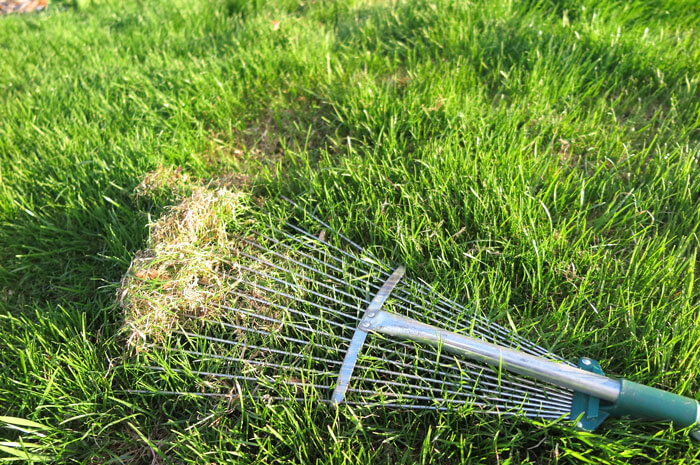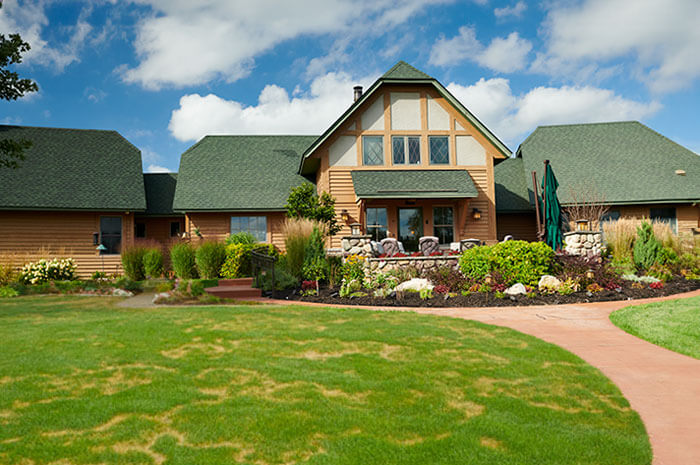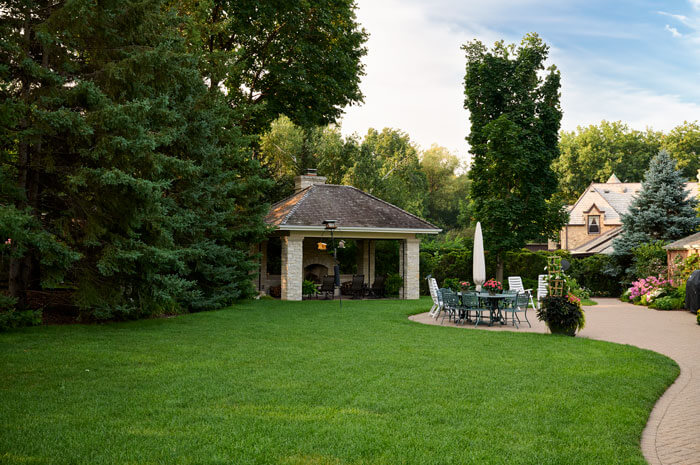
What is Thatch?
Thatch is a layer of organic matter composed of dead organic debris, roots, crowns, and stems, which forms above the soil and below the grass canopy.
Is all thatch bad for your lawn?
A moderate thatch layer can be beneficial for your lawn. Thatch allows beneficial macroorganisms and microorganisms to live which help break down organic matter. In areas with intense traffic thatch can provide a cushioning layer that helps protect the turf and reduces soil exposure.
How do I tell if my thatch layer is getting too thick?
To determine the thickness of your thatch layer take a flat shovel and cut out a small section of turf. The section doesn’t have to be very big but it is important to cut down into the soil so you can pull out a sample which shows the soil profile. Once you have taken your sample of soil you can use a ruler to determine the thickness of your thatch layer. When the thatch layer is greater than ½ inch, practices should be used to reduce the thatch layer.
Is it True That Thatch is Caused by Lawn Clippings?
Lawn clippings do not cause thatch. Most of the organic material which makes up thatch contains lignin which is somewhat resistant to microbial breakdown. Lignin is a main component in rhizomes and stolon’s which contribute to thatch. Lawn clippings are primarily composed of cellulose which is easily decomposed by soil microbes. Removing or returning the clippings to the lawn will not have an effect on the thatch layer.
So leaving clippings on my lawn is a good thing?
Returning the clippings to the lawn can be beneficial. Grass clippings are high in nitrogen which is a nutrient that promotes growth and the green color in grass. By returning clippings back to the lawn the nitrogen in the grass tissue is returned to the soil and increases the fertility of the lawn.
What is the Best Way to Remove Thatch?
There are multiple methods to remove thatch. The method used depends on the size of the lawn and the equipment available to the homeowner. Leaf rakes and spring loaded rakes can remove thatch by aggressively raking the lawn and removing the organic material. This method may work better on smaller lawns where it wouldn’t be time-consuming to rake a lawn by hand. There are some spring loaded rakes which can be pulled by a riding lawn mower which is also effective at removing thatch. Vertical mowers and power rakes are two machines which aggressively cut into the grass vertically and can be set to certain depths depending on the depth of the thatch layer in the lawn. When using the leaf rakes, spring loaded rakes, vertical mowers, and power rakes it can be more effective to go through the lawn in two different directions to increase the amount of thatch removed. Hollow tine aeration is another method which can remove thatch from the soil. Soil cores are removed through hollow tine aeration and the thatch which is attached to the soil cores is also removed. By creating holes in the soil, aeration allows for greater air movement in the soil which can improve microbial breakdown of thatch. Each of these methods can be used to remove thatch. The best method depends on the size of the lawn and the tools a homeowner has access to. Using two methods such as aeration and spring loaded raking can remove more thatch. Also going in two directions will remove more thatch.
When is the best time to dethatch?
Since the methods which remove thatch put the grass under a great amount of stress it is important to remove thatch during a period when the grass is actively growing and not subjected to environmental stresses such as high temperatures or drought. The spring and the fall are the two best times to remove thatch for cool season grasses. Fall is the best time to remove thatch since the plant is preparing for winter, and thatch levels will be small in the spring.
Should I aerate my grass as well as dethatch it?
Aeration is another method to remove thatch from the grass. Hollow tine aeration removes soil cores as well as the thatch attached to the cores. Drainage is also improved by aeration through the holes that are created into the soil profile. Aeration holes are open to the soil surface allowing water an easier pathway to enter the soil. Other benefits which come from aeration include alleviated soil compaction and an increase in oxygen in the rootzone for grass plant respiration. Aeration is a good practice for removing thatch and improving your lawn.



